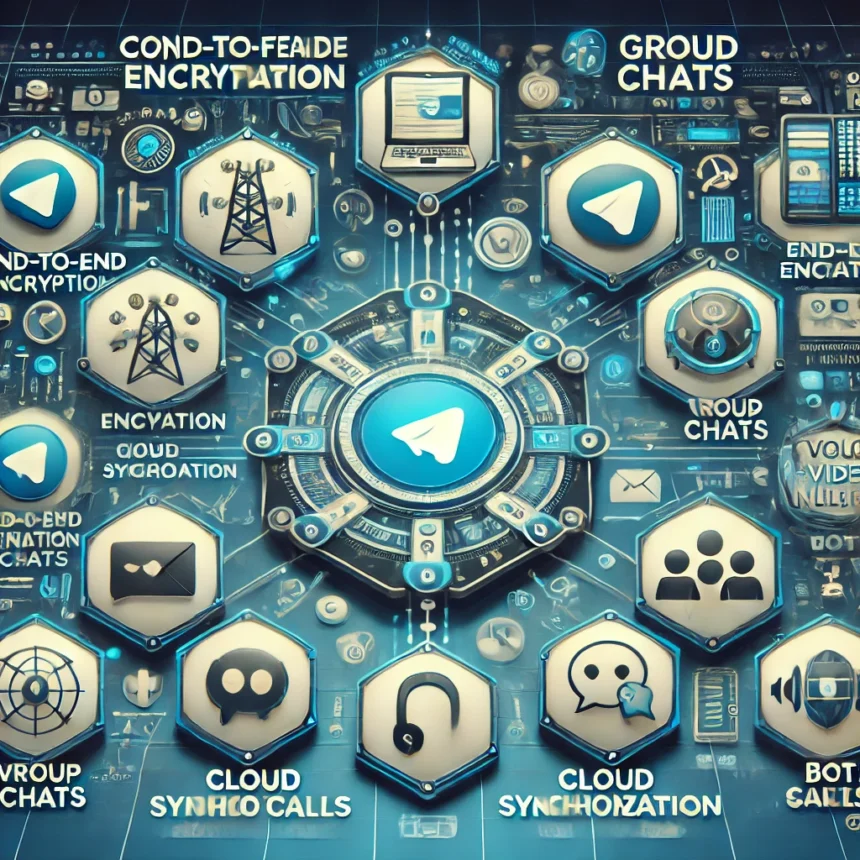With the increasing demand for secure and efficient messaging applications, businesses are keen to develop apps like Telegram to provide users with seamless communication experiences. Telegram has set high standards in terms of security, speed, and user-friendly interfaces, making it a benchmark for messaging apps. To achieve similar success, businesses need to focus on essential features and technologies that ensure a smooth user experience. This blog will explore the core features to consider when developing an app like Telegram and how to hire dedicated resources for successful project execution.
Essential Features for Developing Apps Like Telegram
1. End-to-End Encryption for Security
Security is a top priority when developing a messaging app. Implementing end-to-end encryption ensures that messages remain private between the sender and recipient. Telegram uses MTProto protocol, which enhances security and speed. Developers should focus on encryption algorithms such as AES-256, RSA-2048, and SHA-256 hashing to provide a secure messaging environment.
2. Cloud-Based Messaging
A cloud-based infrastructure is crucial for enabling seamless access to messages across multiple devices. Telegram’s cloud storage allows users to access their chats, media, and documents from any device. When developing apps like Telegram, integrating scalable cloud storage with automatic synchronization is essential for a seamless user experience.
3. Multi-Device Synchronization
Users expect to access their messages from different devices without losing any data. Implementing real-time synchronization across platforms like Android, iOS, and desktop ensures a smooth transition between devices. This feature enhances accessibility and improves user engagement.
4. High-Speed Performance
Telegram is known for its lightweight and high-speed performance. To achieve this, developers must optimize code, use efficient data compression techniques, and minimize server response times. A well-optimized database and server architecture ensure a lag-free messaging experience.
5. Voice and Video Calls
Modern messaging apps must include voice and video calling features. To implement high-quality calls, developers can use WebRTC technology, which provides real-time communication capabilities. Additionally, integrating adaptive bitrate streaming ensures stable video quality even with varying network conditions.
6. Self-Destructing Messages
A unique feature of Telegram is self-destructing messages, which automatically delete after a specified time. This enhances privacy and security, making it a desirable feature for users who prioritize confidentiality. Implementing this feature requires message expiration logic and server-side automation.
7. Chatbots and AI Integration
Telegram allows businesses to interact with users using AI-powered chatbots. These bots automate customer support, provide real-time responses, and handle transactions. Integrating AI-based chatbots can enhance user engagement and streamline business operations.
8. Group and Channel Features
For social and business communication, group chats and broadcast channels are essential. Telegram allows users to create large groups with thousands of members and public/private channels for content distribution. This feature enhances community engagement and content sharing.
9. File Sharing and Cloud Storage
Telegram supports large file sharing (up to 2GB per file) and stores them in the cloud. When developing a similar app, ensuring secure and fast file transfer with encrypted storage is crucial. Developers should consider integrating CDN (Content Delivery Network) for fast media delivery.
10. Custom Stickers and Emojis
User engagement can be significantly enhanced by allowing custom stickers and emojis. Telegram allows users to create and share personalized stickers, which makes conversations more interactive. Implementing a sticker marketplace can further boost user engagement and revenue generation.
11. Dark Mode and UI Customization
A well-designed UI/UX plays a vital role in user retention. Providing features such as dark mode, customizable themes, and font adjustments ensures an engaging and personalized experience for users.
12. Multi-Language Support
To target a global audience, incorporating multi-language support is essential. Telegram supports multiple languages, allowing users from different regions to communicate efficiently. Implementing a language translation feature can further enhance accessibility.
13. Message Reactions and Polls
Interactive features like message reactions, polls, and quizzes encourage user participation. Businesses can leverage these features to conduct surveys and collect feedback.
14. Privacy Control and Two-Factor Authentication
A privacy-centric app should offer two-factor authentication (2FA), customizable privacy settings, and app lock features to enhance security. Users should have control over who can contact them and access their data.
15. API and Third-Party Integrations
For business use, offering API access and third-party integrations allows companies to integrate their services with the app. Telegram provides an API that enables developers to build bots, automate processes, and integrate with external applications.
Steps to Develop an App Like Telegram
1. Define Project Requirements
Start by defining the core functionalities, target audience, and business goals. Conduct market research to identify the key features that differentiate Telegram from other messaging apps.
2. Choose the Right Technology Stack
Selecting the right technology stack is critical for performance and scalability. Commonly used technologies include:
- Programming Languages: Swift (iOS), Kotlin (Android), Node.js (Backend)
- Database: PostgreSQL, Firebase
- Cloud Services: AWS, Google Cloud
- Encryption Protocols: MTProto, AES, RSA
3. Hire Dedicated Resources
To ensure smooth app development, businesses should hire dedicated resources such as:
- UI/UX Designers for an intuitive interface
- Mobile App Developers for Android and iOS platforms
- Backend Developers for server management
- Security Experts to implement encryption and security protocols
- QA Testers for rigorous testing
- Project Managers to oversee development and execution
Outsourcing development to a skilled team of dedicated resources can expedite the process and ensure high-quality results.
4. Develop an MVP (Minimum Viable Product)
Building an MVP allows businesses to test their app with essential features before full-scale development. This step helps in identifying user feedback and making improvements accordingly.
5. Test and Optimize Performance
Before launching the app, conduct thorough testing to identify and fix bugs. Performance optimization ensures the app runs smoothly across devices.
6. Deploy and Market the App
Once testing is complete, deploy the app on Google Play Store and Apple App Store. Implement a marketing strategy, including social media promotion, influencer marketing, and app store optimization (ASO) to reach a wider audience.
7. Regular Updates and Enhancements
Post-launch, continually update the app with new features, security enhancements, and bug fixes to keep users engaged and improve retention.
Conclusion
Developing a successful messaging app like Telegram requires a deep focus on security, performance, and user engagement. By incorporating core features such as end-to-end encryption, multi-device synchronization, voice/video calls, and AI-powered chatbots, businesses can create a competitive messaging platform. Additionally, it is crucial to hire dedicated resources to ensure smooth development, testing, and deployment. Investing in a skilled development team can accelerate the process and result in a high-quality application that meets user expectations.
If you’re looking to develop apps like Telegram, partnering with experienced developers and leveraging the latest technologies will help you achieve success in the competitive messaging app market.






